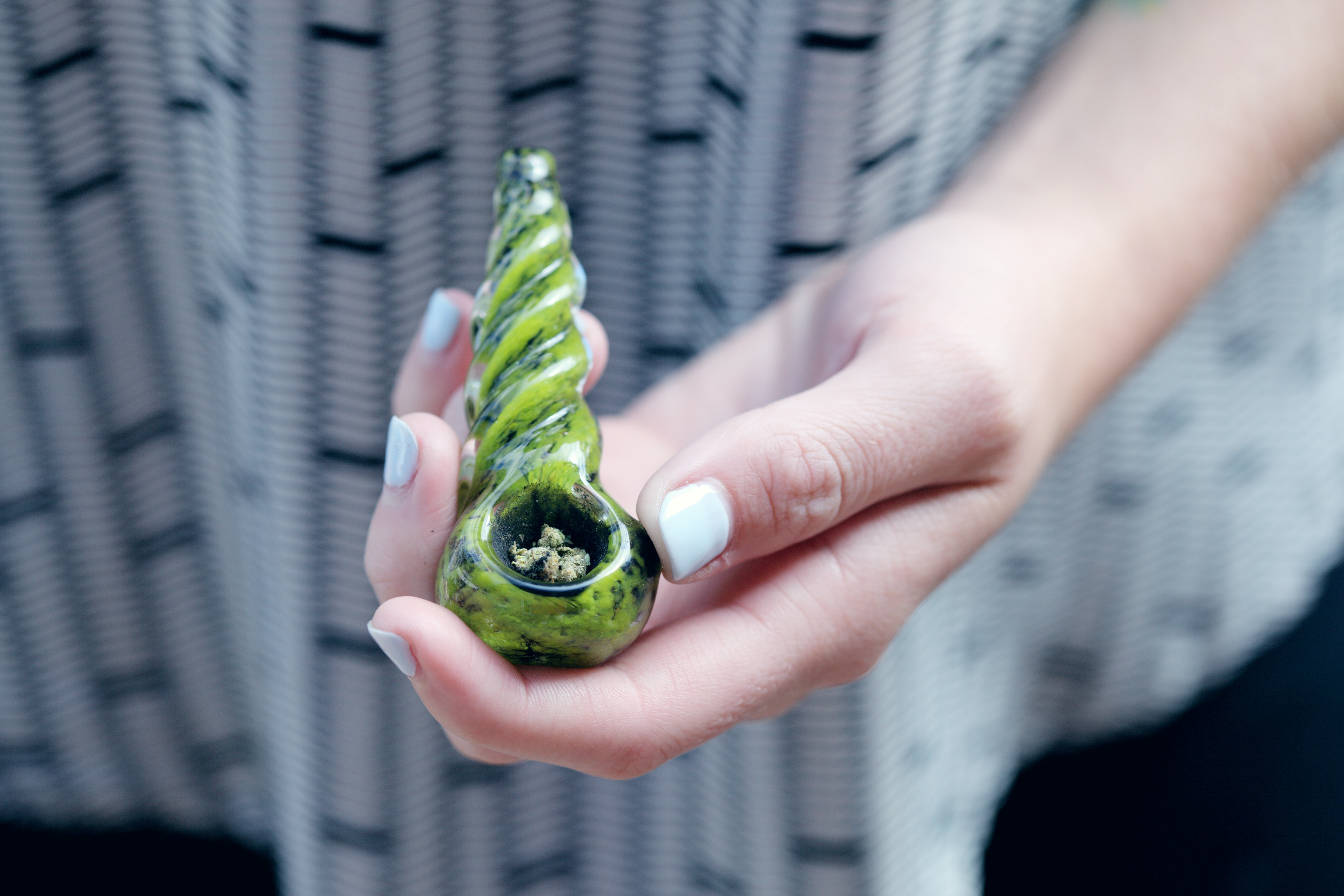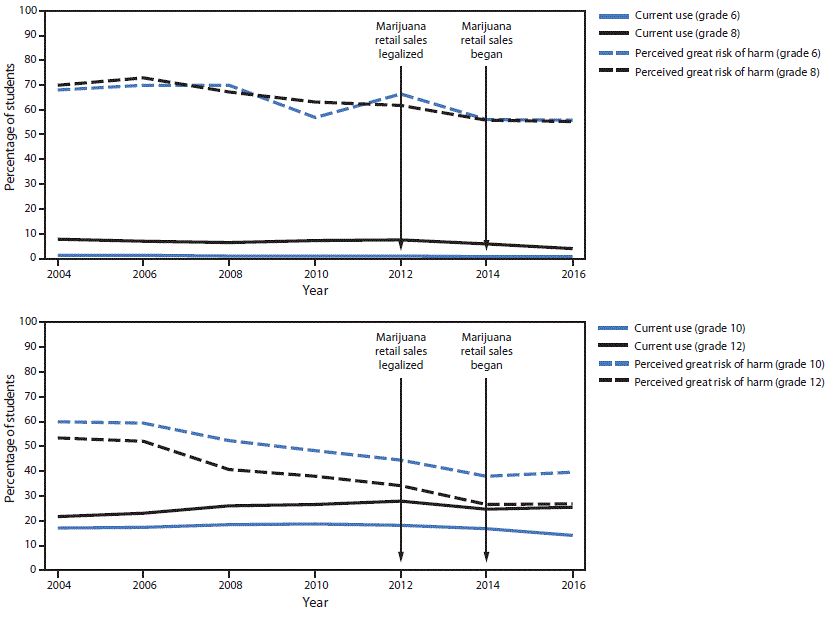
After marijuana became legal for adults in Washington State, fewer adolescents in the largest metropolitan county in the state reported past-month cannabis consumption, a new federally published study concludes.
“Following 2012 legalization of retail marijuana sale to adults in Washington, past 30–day marijuana use decreased or remained stable through 2016 among King County students in grades 6, 8, 10, and 12,” the study states. “Among grade 10 students, the decline in use occurred among males while the rate among females remained steady. Use of alcohol or other substances was four times as frequent among marijuana users as among nonusers.”
The results, published Friday in the Centers for Disease Control and Prevention’s Morbidity and Mortality Weekly Report, support past studies with similar findings on youth marijuana use after legalization in Washington and other states.
Researchers with Public Health—Seattle & King County analyzed data on substance use for 2004–2016 from the Washington State Healthy Youth Survey, which is conducted statewide every two years to assess health risk behaviors among public school students in grades 6, 8, 10 and 12.
In that time period, the study’s authors found that sixth graders reported a decline in marijuana use within the past 30 days, while the percentage of eighth graders who had consumed cannabis in the past month did not change. Between 2004 and 2012, the percentage of high school sophomores and seniors reporting use increased, but then declined after 2012—the year that voters approved a marijuana legalization ballot measure.
“Despite legalization of the retail sale of marijuana to adults in Washington in 2012, evidence from the biennial Washington State Healthy Youth Survey indicates that the prevalence of past 30–day marijuana use among students in grades 10 and 12 began to decline that year.”In other words, despite opponents’ fears that ending prohibition for adults would pave the way to more teens accessing and consuming marijuana, those concerns are not supported by data.

CDC
Among grade 10 students, 24.0% of past 30–day marijuana users also smoked cigarettes, compared with 1.3% of nonusers.” Interestingly, although 30-day self-reported marijuana use declined among male students in the 10th grade, there was no change for their female counterparts.
The authors also point out that “the prevalence of perception of great risk of harm from regular marijuana use decreased across all grades” during the study period.
Researchers also found that students in grade 10 who said they’d consumed cannabis were more likely to report using other substances in the past month—including alcohol (67 percent), cigarettes (24 percent) and e-cigarettes or vape pens (43 percent)—as compared to those who did not use marijuana.
“Although the relationship between legal adult recreational use and youth use is not well understood, two possible reasons for the observed decline in youth use include reduction of illicit market supply through competition and loss of novelty appeal among youths,” the study‘s authors conclude.
“Furthermore, it would be important to monitor the long-term role legalization might play to foster a permissive use environment given observed strong associations with use and individual and family factors that influence youth use.”
The researchers noted that the “decline or absence of change in youth marijuana use after legalization of retail sales to adults is consistent with trends reported in Colorado and Oregon, states that legalized adult retail sales of marijuana in 2013 and 2014, respectively.”

No comments:
Post a Comment